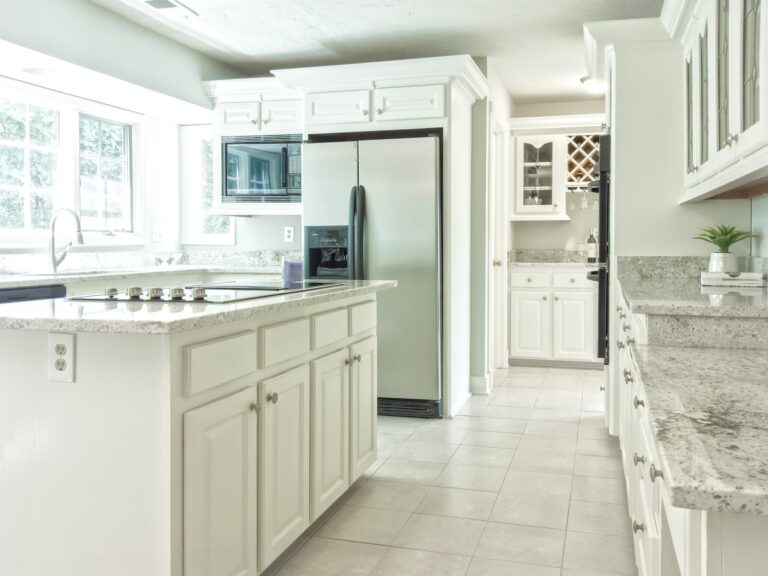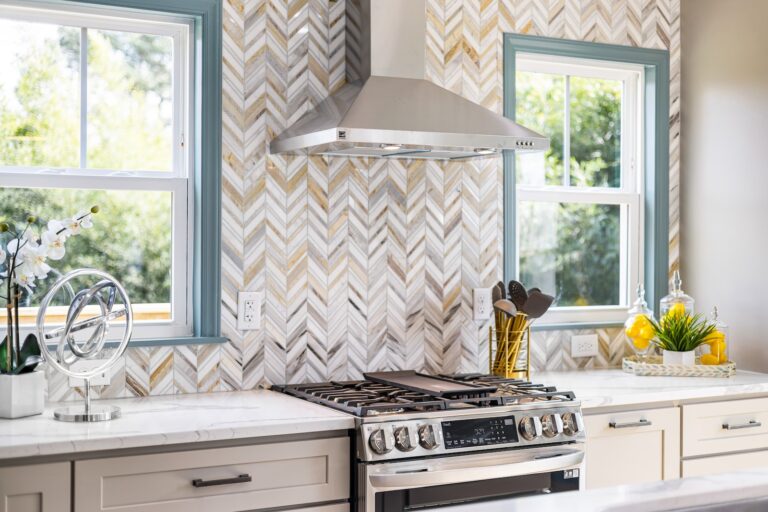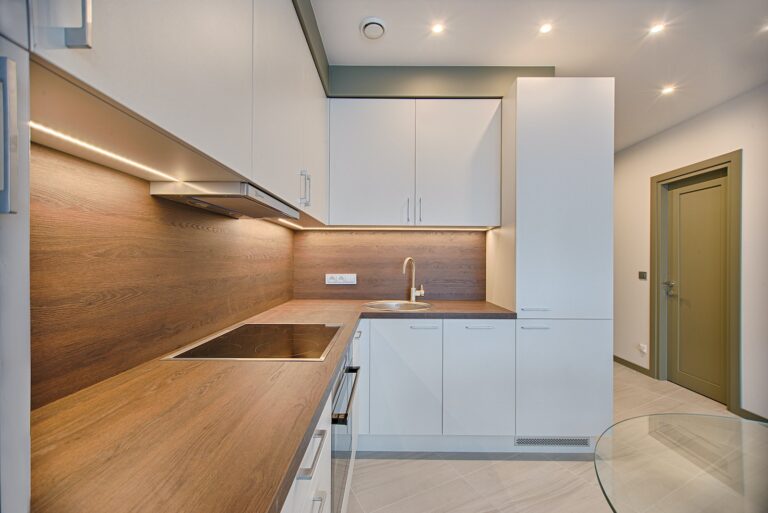How To Get Rid Of Mold Under Kitchen Cabinets?
Mold is a common problem in kitchens, particularly under cabinets where moisture can accumulate. Not only is it unsightly, but it can also pose health risks to you and your family. If you’ve noticed mold under your kitchen cabinets, don’t worry, there are several effective ways to get rid of it. In this article, we’ll go over some easy and practical tips to help you eliminate mold from under your kitchen cabinets and keep it from coming back.
- Remove all items: Clear out all items from the cabinets and wipe down the surfaces with soap and water.
- Mix vinegar and water: Mix equal parts of white vinegar and water in a spray bottle.
- Spray affected areas: Spray the affected areas with the vinegar solution and let it sit for 30 minutes.
- Scrub: Use a scrub brush to scrub away the mold and wipe down with a clean cloth.
- Prevent future mold growth: Use a dehumidifier to reduce moisture and increase ventilation in the room.
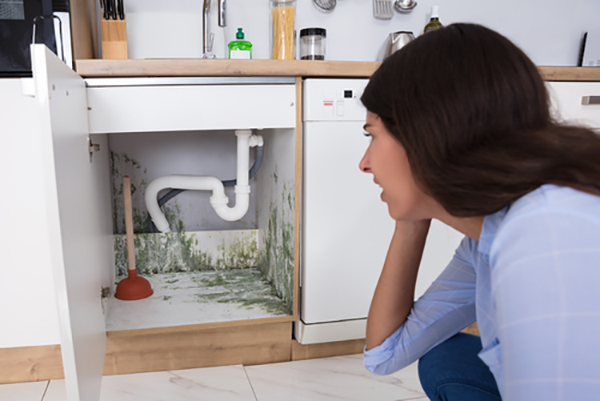
How to Get Rid of Mold Under Kitchen Cabinets?
If you’ve noticed a musty smell in your kitchen or have seen black spots underneath your cabinets, then it’s likely that you have a mold problem. Mold thrives in damp, dark places, and the area underneath your kitchen cabinets can be the perfect breeding ground. But don’t worry, getting rid of mold under kitchen cabinets is not as difficult as it may seem. Here’s what you need to know.
1. Identify the Source of Moisture
Before you can get rid of mold, you need to find the source of the moisture that’s causing it. Common sources of moisture include leaky pipes, condensation, and high humidity levels. Once you’ve identified the source of the problem, you can take steps to fix it.
The easiest way to reduce humidity levels is to use a dehumidifier. If you have a leaky pipe, you’ll need to call a plumber to fix it. And if condensation is the problem, then you may need to improve ventilation in your kitchen.
2. Wear Protective Gear
Before you start cleaning the mold, it’s important to protect yourself. Wear gloves, a mask, and safety goggles to avoid contact with the spores. Mold can cause health problems, so it’s better to be safe than sorry.
3. Remove the Mold
To remove the mold, mix equal parts of water and vinegar in a spray bottle. Spray the affected area and let it sit for 10-15 minutes. Then, scrub the mold with a brush and wipe the area clean with a damp cloth. If the mold is stubborn, you may need to use a commercial mold cleaner.
4. Dry the Area
Once you’ve removed the mold, it’s important to dry the area thoroughly. Use a fan or dehumidifier to speed up the drying process. If the area is still damp, then the mold may return.
5. Seal the Cabinets
To prevent mold from coming back, you’ll need to seal your kitchen cabinets. Use a waterproof sealant to seal any gaps or cracks in the cabinets. This will prevent moisture from getting in and creating the perfect environment for mold growth.
6. Use a Mold-Resistant Paint
If you’re repainting your kitchen cabinets, then consider using a mold-resistant paint. This type of paint contains anti-microbial agents that prevent mold growth. It’s a great way to keep your kitchen mold-free.
7. Keep Your Kitchen Clean and Dry
One of the best ways to prevent mold is to keep your kitchen clean and dry. Wipe up any spills or leaks immediately and use a fan or dehumidifier to keep the air dry. Also, make sure to clean your kitchen cabinets regularly to prevent dirt and grime from building up.
8. Store Food Properly
Mold loves to grow on food, so it’s important to store food properly. Keep food in sealed containers and throw away any food that’s past its expiration date. Also, make sure to clean your pantry regularly to prevent crumbs and spills from attracting mold.
9. Consider a Professional Mold Inspection
If you’ve had a mold problem in the past, or if you’re concerned about the potential for mold growth, then consider a professional mold inspection. A professional can identify potential problem areas and provide recommendations for prevention.
10. Benefits of Preventing Mold Growth
Preventing mold growth in your kitchen has several benefits. First, it can improve the air quality in your home, which can reduce the risk of respiratory problems. Second, it can prevent damage to your home’s structure, which can save you money on repairs. And finally, it can give you peace of mind knowing that your home is healthy and safe for you and your family.
In conclusion, getting rid of mold under kitchen cabinets is not as difficult as it may seem. By following these simple steps, you can prevent mold growth and keep your kitchen healthy and mold-free. Remember to identify the source of moisture, wear protective gear, remove the mold, dry the area, seal the cabinets, use a mold-resistant paint, keep your kitchen clean and dry, store food properly, consider a professional mold inspection, and enjoy the benefits of a healthy home.
Frequently Asked Questions
In this section, we will answer some common questions related to getting rid of mold under kitchen cabinets.
What causes mold to grow under kitchen cabinets?
Mold thrives in warm, damp, and humid environments. If there is a water leak or high humidity in the kitchen, it can lead to mold growth under the cabinets. Lack of proper ventilation and poor cleaning habits can also contribute to the growth of mold.
To prevent mold growth, it’s essential to keep the kitchen dry and well-ventilated. Fix any leaks immediately and wipe down surfaces regularly to prevent moisture buildup.
How can I detect mold under the kitchen cabinets?
Mold under kitchen cabinets can be hidden from view, making it challenging to detect. However, there are some signs that you can look out for, such as a musty odor, discoloration or staining on the cabinets, and the presence of mold spores in the air.
If you suspect mold growth under your kitchen cabinets, it’s best to call a professional mold remediation company to assess the situation and provide a solution.
Can I remove mold under kitchen cabinets myself?
Mold remediation is a complex process that requires specialized equipment and expertise. While you can remove small patches of mold on your own, it’s not recommended to remove mold under kitchen cabinets without professional help.
Mold remediation companies have the necessary tools and knowledge to safely remove mold without spreading spores throughout your home. They can also identify the root cause of the mold growth and provide solutions to prevent it from reoccurring.
How much does it cost to remove mold under kitchen cabinets?
The cost of mold remediation depends on the extent of the mold growth and the type of mold present. On average, the cost can range from $500 to $6,000. The cost may increase if the mold has spread to other areas of the home or if there are underlying issues like water damage that need to be addressed.
It’s important to get a professional mold inspection and estimate to determine the exact cost of remediation for your specific situation.
How can I prevent mold from growing under kitchen cabinets?
The best way to prevent mold growth under kitchen cabinets is to keep the area dry and well-ventilated. Fix any leaks immediately, wipe down surfaces regularly, and use a dehumidifier if necessary.
It’s also essential to address any underlying issues like water damage, poor ventilation, or high humidity levels. Regular maintenance and cleaning can go a long way in preventing mold growth under kitchen cabinets.
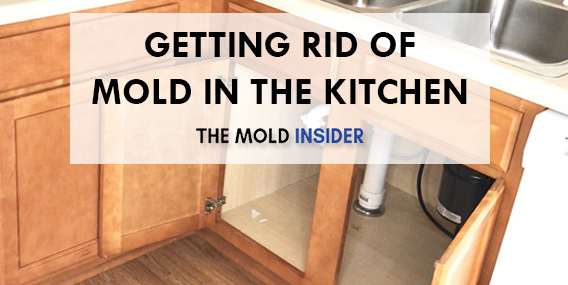
Black Mold – How we get rid of mold in under 3 min!
In conclusion, getting rid of mold under kitchen cabinets is not only important for aesthetic reasons but also for the health of you and your family. The first step is to identify the root cause of the mold growth and fix it. Cleaning the affected area with a vinegar solution or a mold-killing product can help to remove the mold. However, to prevent mold from growing back, it is important to maintain proper ventilation and humidity levels in your kitchen. By following these steps, you can effectively get rid of mold under your kitchen cabinets and create a safe and healthy environment for your family.




